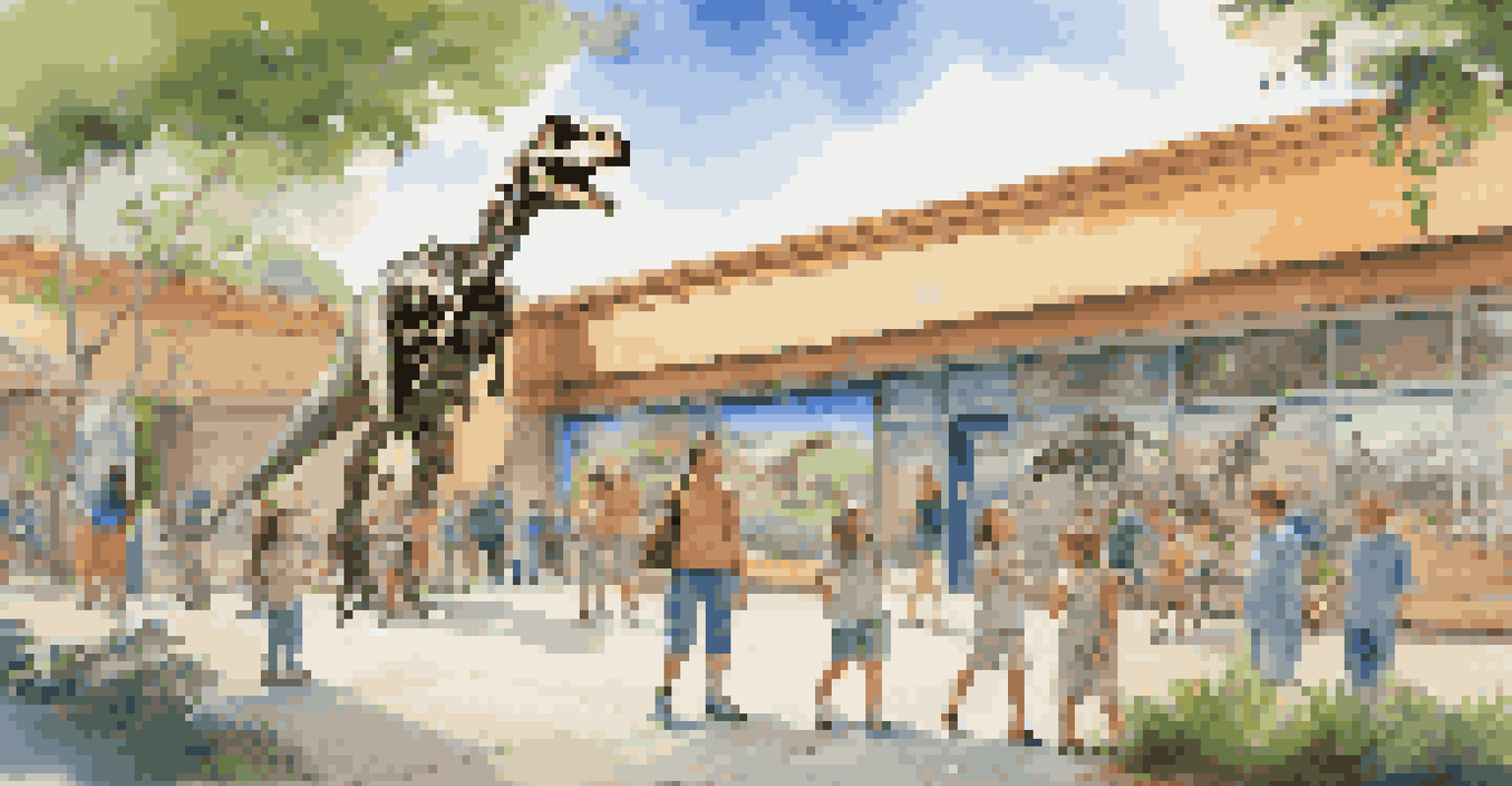How to Balance Life-long Learning with Family Responsibilities

Understanding the Importance of Lifelong Learning
Lifelong learning is the ongoing, voluntary, and self-motivated pursuit of knowledge. It enriches your personal and professional life, keeping you adaptable in a constantly changing world. Think of it like watering a plant; just as it needs nutrients to grow, your mind needs learning to flourish. By understanding its importance, you can prioritize it amidst your family responsibilities.
Education is the most powerful weapon which you can use to change the world.
This commitment to learning can manifest in various forms, such as online courses, reading books, or attending workshops. Each of these activities not only enhances your skills but also sets a positive example for your family. When children see their parents actively engaged in learning, they are more likely to adopt similar habits. Thus, lifelong learning becomes a family value rather than a solo endeavor.
Balancing this pursuit with family life can be challenging but is absolutely achievable with the right mindset and strategies. Recognizing that learning is a valuable part of personal growth helps you to integrate it into your daily routine, making it less of a chore and more of a shared family journey.
Setting Realistic Goals for Learning
Setting realistic goals is crucial when balancing learning with family life. Instead of overwhelming yourself with ambitious plans, start small. For instance, dedicate just 15 minutes a day to reading or an online course. This approach not only makes your goals more attainable but also allows you to fit them seamlessly into your schedule, much like adding a new ingredient to a recipe.

Moreover, breaking larger goals into smaller milestones can provide a sense of accomplishment along the way. Celebrate these small wins with your family; it reinforces the idea that learning is a shared journey. For example, when you complete a module in a course, share what you've learned over dinner, making it a family discussion rather than a personal feat.
Embrace Lifelong Learning Together
Engaging in learning activities as a family not only enriches individual knowledge but also strengthens family bonds.
Remember, it’s not about how much you learn but how effectively you integrate it into your life. By setting achievable goals, you empower yourself to engage in lifelong learning without sacrificing family time, creating a more enriching environment for everyone.
Incorporating Learning into Family Activities
Finding ways to blend learning with family activities can make the process fun and engaging. For example, you can turn a family outing into a learning experience by visiting museums or historical sites. This not only satisfies your thirst for knowledge but also strengthens family bonds through shared experiences.
Tell me and I forget, teach me and I remember, involve me and I learn.
Another approach is to involve your family in your learning journey. If you’re exploring a new subject, invite their input or create a family project around it. This could be anything from cooking a dish from a different culture to conducting a science experiment together. Such activities foster a collaborative spirit and show that learning can be enjoyable for everyone.
By making learning a part of family life, you not only enrich your knowledge but also create lasting memories. It transforms the way learning is perceived, shifting it from a solitary task to a family adventure, reinforcing the notion that education is a lifelong journey best undertaken together.
Creating a Supportive Learning Environment at Home
Establishing a supportive learning environment at home is essential for fostering lifelong learning. Designate a specific area in your home where learning can take place—this could be a cozy reading nook or a shared workspace. Having a dedicated space signals to your family that learning is a valued activity, just like mealtime or playtime.
Encourage open discussions about what each family member is learning. This creates a culture of curiosity where everyone feels comfortable sharing their interests and insights. It’s similar to a book club; by discussing ideas, you deepen your understanding and connect with each other on a different level.
Set Achievable Learning Goals
Starting with small, realistic goals allows for effective integration of learning into daily life without overwhelming family time.
Lastly, be mindful of the resources available to your family. Whether it’s books, online courses, or educational games, ensuring access to various learning materials can inspire curiosity and engagement. A well-equipped environment nurtures a love for learning, making it a natural part of your family life.
Utilizing Technology for Learning Flexibility
In today's digital age, technology offers incredible flexibility for lifelong learning. Online courses, podcasts, and e-books can be accessed from virtually anywhere, making it easier to fit learning into your busy schedule. Think of it like having a library in your pocket; you can learn during your commute, at the park, or while waiting for soccer practice to end.
Moreover, many educational apps are designed specifically for families, promoting interactive learning experiences. These apps can turn studying into a game, making it more engaging for both adults and children. For instance, language apps encourage family members to learn new words together, fostering a sense of teamwork.
Balancing learning with family responsibilities becomes much more manageable when you leverage technology. By utilizing these digital resources, you can stay committed to your educational goals while still being present for your loved ones, seamlessly weaving learning into the fabric of family life.
Learning from Family Experiences
Family life is filled with learning opportunities, often found in everyday situations. Whether it’s cooking a family recipe passed down through generations or tackling a home project together, these experiences provide invaluable lessons. Embrace these moments as they arise; they can teach skills like teamwork, problem-solving, and creativity.
Sharing stories from your past can also serve as powerful learning moments for your children. Relating anecdotes about challenges you faced and how you overcame them can inspire resilience and critical thinking. It’s akin to storytelling; through narratives, you impart wisdom without the formalities of a classroom.
Utilize Technology for Flexibility
Leveraging digital resources makes it easier to incorporate learning into busy family schedules, offering flexibility and engagement.
By recognizing and valuing these experiences as learning opportunities, you foster an environment where education is woven into daily life. This shift in perspective not only enriches your family's learning journey but also strengthens your connections, making every moment count.
Prioritizing Self-Care Amid Learning and Family Life
Amid the hustle of balancing learning and family responsibilities, self-care is often overlooked. However, taking care of yourself is fundamental to maintaining the energy and focus needed for both learning and family life. Think of self-care as the fuel that keeps your engine running; without it, you risk burnout.
Incorporating small self-care practices into your routine can make a big difference. Whether it's a brief meditation session, a walk in the park, or simply enjoying a quiet cup of tea, these moments recharge your mind and body. When you prioritize your well-being, you create a more positive atmosphere for learning and family interactions.

Ultimately, being the best version of yourself benefits everyone around you. When you feel fulfilled and balanced, you can engage more meaningfully in both your learning pursuits and family responsibilities, creating a harmonious environment for all.